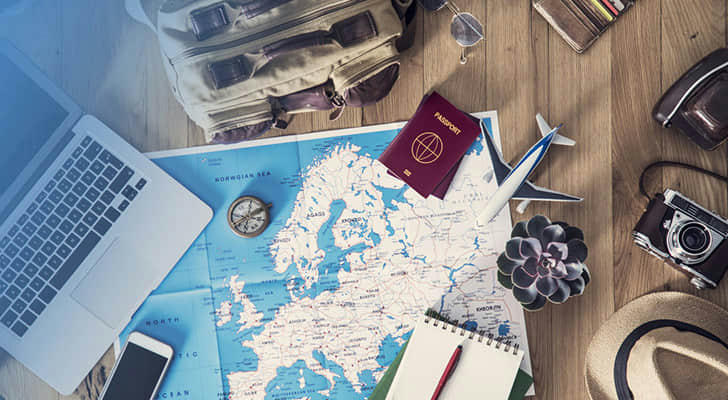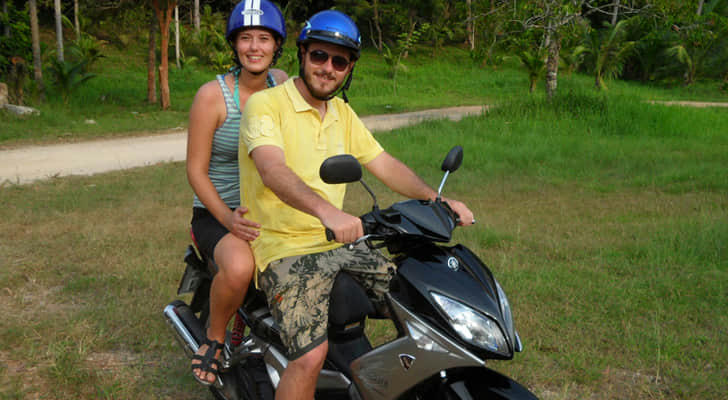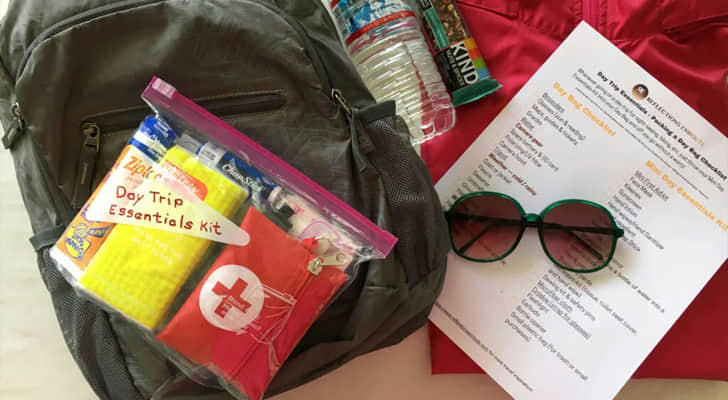How to Plan Your Journey: Travel Precautions for a Smooth and Safe Adventure

Traveling is an exciting adventure, whether you're heading on a road trip, flying to a new destination, or taking a train across a country. While the journey itself can be thrilling, it's essential to plan your trip with safety in mind. Preparing carefully can help you avoid unexpected issues, reduce stress, and ensure you arrive at your destination safely. This guide will walk you through key precautions to take when planning your journey, from packing the right gear to following travel rules and safety tips.
1. Research Your Destination
The first step in planning any trip is to do your homework on your destination. Knowing what to expect when you arrive can help you avoid common travel risks and prepare better for your journey. Consider the following:
● Weather: Check the weather forecast for your destination. If you’re traveling to a place with extreme weather (e.g., heavy rain, snow, or extreme heat), pack the appropriate clothing and gear.
● Local laws and customs: Every country or region has different traffic rules, cultural norms, and legal regulations. For instance, some countries drive on the left side of the road, and others may have strict rules about jaywalking. Make sure you’re familiar with the local regulations.
● Safety tips: Some destinations have higher crime rates, while others may have specific areas where tourists should avoid. Reading up on local safety advice can help you make smart decisions about where to go and when.
Case Study: Emily's Research Saves the Day
Emily planned a trip to Thailand. While researching her destination, she discovered that many local motorbike rentals didn’t provide helmets. Armed with this knowledge, she brought her own helmet and avoided the risk of riding without proper protection. This simple precaution helped her travel more safely and enjoy her journey with peace of mind.

2. Plan Your Route in Advance
Whether you’re driving, flying, or taking a bus, planning your route ahead of time can help you avoid potential problems. Here’s how to make sure your route is safe and efficient:
● Check traffic conditions: If you’re driving, use apps like Google Maps or Waze to check real-time traffic and road conditions. Avoid known traffic jams, road closures, or construction zones to minimize delays and reduce stress.
● Map out rest stops: On long drives or bus trips, you’ll need breaks to rest, eat, and refuel. Plan rest stops along the way, especially if you’re traveling through rural areas where services may be scarce.
● Account for flight or bus schedules: If you’re flying or taking public transportation, be sure to check your departure and arrival times. Give yourself plenty of time to get to the airport or station and to make any necessary connections.
Case Study: Mark’s Road Trip Success
Mark and his family planned a road trip from Los Angeles to San Francisco. Before leaving, he mapped out the entire route, including rest stops and gas stations. He also checked for potential road closures along Highway 1, a scenic but sometimes risky route. Thanks to his careful planning, the trip went smoothly, and they enjoyed a stress-free drive with beautiful coastal views.
3. Pack the Essentials for Safety
Packing smartly is crucial for a safe journey. While it’s tempting to focus on clothes and gadgets, don’t forget these essential safety items:
● First aid kit: Include bandages, antiseptic wipes, pain relievers, and any prescription medications you may need.
● Travel documents: Always carry identification, travel insurance details, and copies of important documents like your passport or visa.
● Emergency contacts: Have a list of emergency numbers, including local authorities and contacts back home.
● Snacks and water: Especially on long journeys, pack snacks and water to stay hydrated and energized.
● Portable charger: Keep your phone charged in case of emergencies, especially if you rely on it for navigation.
● Flashlight: A small, portable flashlight can be a lifesaver if you’re traveling at night or in unfamiliar places.
Packing Tip: Keep these items in an easily accessible part of your bag so you can grab them quickly in case of an emergency.

4. Follow Transportation Safety Guidelines
No matter how you’re traveling, whether by car, plane, train, or bus, it’s important to follow specific safety guidelines for each mode of transportation:
● For drivers:
***○ Wear seatbelts:*** Make sure all passengers wear seatbelts, no matter how short the trip.
***○ Avoid distractions:*** Texting, talking on the phone, or using your GPS while driving can lead to accidents. Set up your route before you start driving and focus on the road.
***○ Don’t drive tired:*** Driving while drowsy is just as dangerous as driving under the influence. Take breaks every couple of hours to rest and refresh.
○ For flyers:
***○ Follow safety instructions:*** Pay attention to the in-flight safety instructions and know where the exits are.
***○ Stay seated when needed:*** Avoid walking around during turbulence, and always keep your seatbelt fastened when seated.
○ For train and bus travelers:
***○ Hold onto railings:*** When standing or moving on a train or bus, always hold onto handrails to avoid falls.
***○ Keep your belongings secure:*** Theft can be a risk on public transport, so keep your valuables close and secure at all times.
5. Stay Aware of Your Surroundings
No matter where you’re traveling, staying aware of your surroundings can help you avoid many safety risks. This includes:
● Watching out for suspicious behavior: Whether you’re in a crowded airport or walking down a quiet street, be mindful of your environment. Trust your instincts—if something feels off, take precautions.
● Keeping your belongings secure: Don’t leave bags or valuables unattended, and avoid flashing expensive items like phones, cameras, or jewelry in public.
● Being cautious in unfamiliar areas: Stick to well-lit, populated areas, especially if you’re walking alone at night. Avoid taking shortcuts through alleys or unfamiliar neighborhoods.

6. Prepare for Emergencies
Even with the best planning, emergencies can happen. It’s important to be prepared so you can respond calmly and effectively. Here’s how:
● Know emergency contacts: Before you leave, research local emergency numbers (like 911 in the US or 112 in Europe) and save them to your phone. Also, know the location of the nearest hospital or emergency services.
● Share your itinerary: Let someone back home know your travel plans, including where you’re staying and your expected return date. This way, someone will know if something goes wrong.
● Have a backup plan: If you lose your wallet, passport, or phone, have a backup plan in place. This could include carrying copies of important documents or keeping extra cash in a separate location.
Case Study: Sarah's Preparedness Saves the Day
Sarah was backpacking through Europe when she lost her phone during a train ride. Fortunately, she had prepared by keeping photocopies of her passport and travel insurance in her backpack. She also had an emergency contact card with key phone numbers. Thanks to her preparation, she was able to find help quickly, contact her family, and continue her trip without major disruptions.
7. Stay Healthy During Your Journey
Travel can take a toll on your health, so it’s important to take care of yourself on the road. Here are a few tips:
● Stay hydrated: Drink plenty of water, especially if you’re flying or traveling in hot climates.
● Take breaks: Whether you’re driving or flying, take time to stretch your legs and move around to avoid stiffness or fatigue.
● Practice good hygiene: Wash your hands frequently, and carry hand sanitizer to reduce the risk of getting sick.
● Rest when needed: Don’t overextend yourself. Schedule downtime in your itinerary to rest and recover, especially on long trips.

Conclusion
Planning a smooth and safe journey involves more than just booking tickets and packing bags. By taking the time to research your destination, plan your route, pack essential items, and follow transportation and safety guidelines, you can ensure that your trip goes as smoothly as possible. Being prepared for emergencies and staying aware of your surroundings will also help you avoid potential problems and keep you safe throughout your journey.
Traveling should be fun and enjoyable, not stressful or dangerous. With these precautions in mind, you’ll be able to embark on your next adventure with confidence, knowing that you’ve planned for a safe and successful trip. Safe travels!
